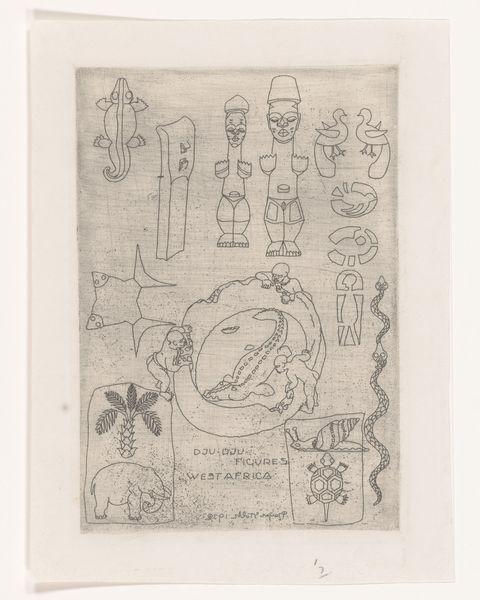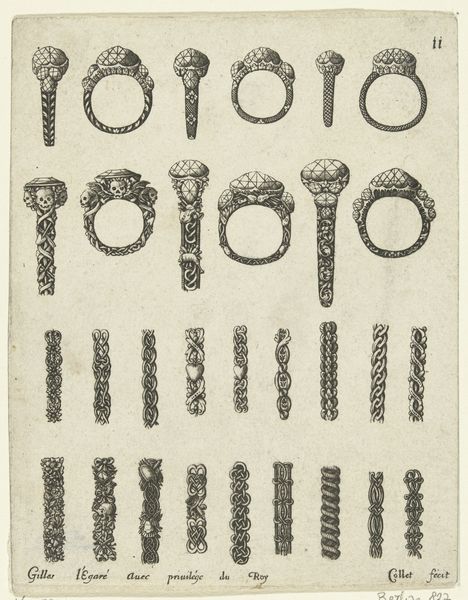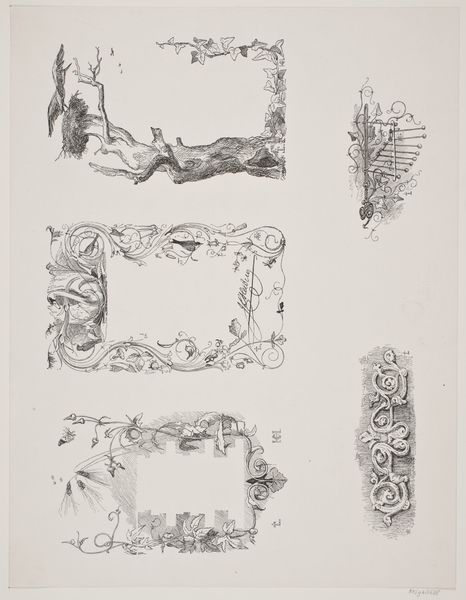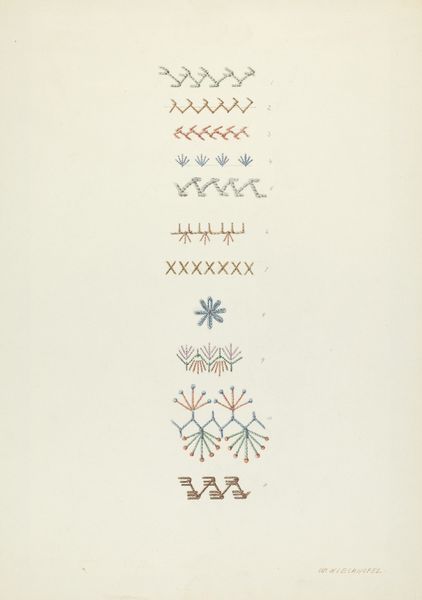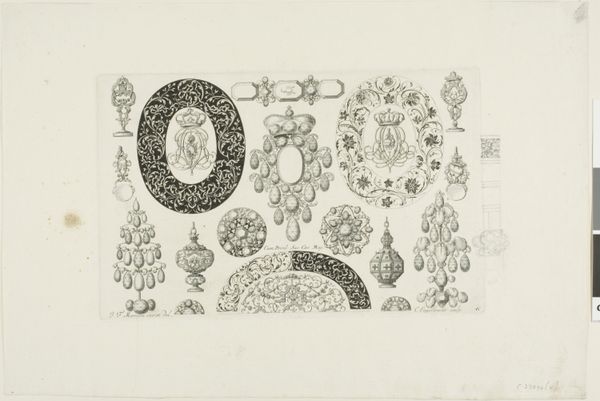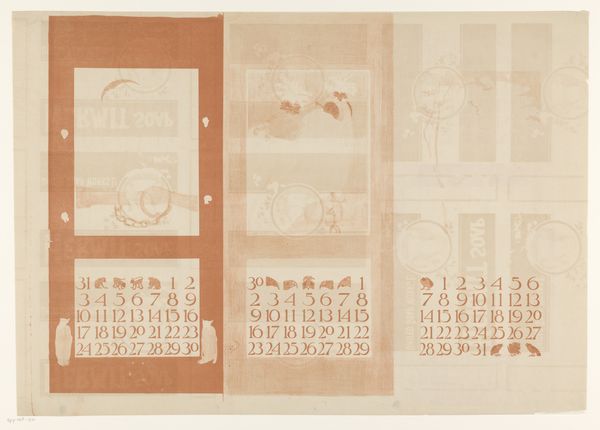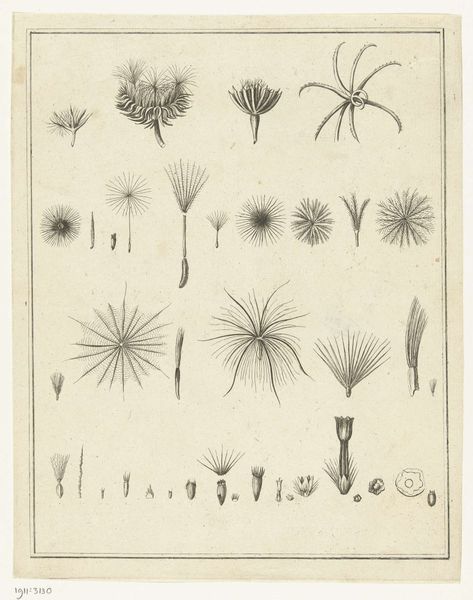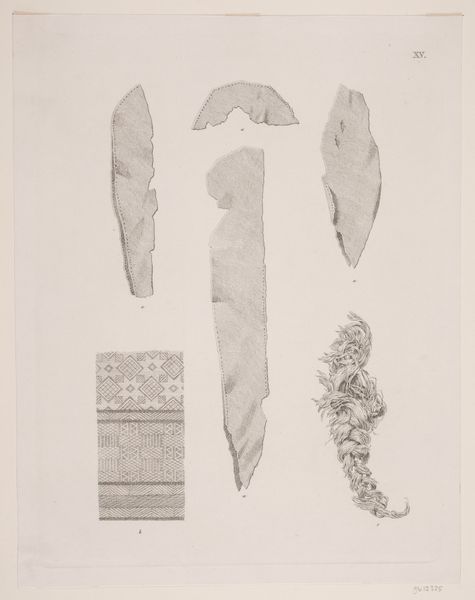
drawing, print, etching, paper
#
drawing
# print
#
etching
#
paper
#
plant
#
academic-art
Dimensions: height 341 mm, width 212 mm
Copyright: Rijks Museum: Open Domain
Editor: This is "Blad met omtrek van 62 bladeren van verschillende planten," or "Sheet with outlines of 62 leaves from different plants," created by Jan Wandelaar in 1738. It's an etching on paper, quite like a scientific study of leaves. What strikes me is the sheer labor involved in creating this precise botanical record. What do you make of it? Curator: Precisely! The labor and materiality are key. Consider the socio-economic context: access to paper, the etching tools, the time required for this level of detail. It challenges our perception of art as purely aesthetic. Was Wandelaar commissioned? Who consumed these images? Was it part of a larger scientific text or study? What was the division of labour required to produce this? Editor: That's interesting – so you're suggesting we shift focus from appreciating it solely as art and examine its role in a network of production and consumption? Curator: Exactly. The meticulous rendering points to a scientific approach, a desire to classify and understand the natural world. But the artistic skill elevates it beyond mere documentation. How does the repetitive nature of the printmaking process – a process designed for mass production - affect our understanding of these unique leaf shapes? Is the standardization inherent in printmaking at odds with the natural variation depicted? Editor: It almost feels like a precursor to modern data visualization, but handcrafted. What are your thoughts on the ‘academic-art’ style applied here? Curator: It's crucial. Academic art in this era dictated a certain level of precision, a controlled hand. Yet, it's the tension between this controlled style and the organic forms that I find compelling. The act of imposing order onto nature reflects a specific mindset and a power dynamic. By exploring the materials, techniques, and the context, we can appreciate the art piece beyond its face value. Editor: This has certainly opened my eyes to a different perspective. I’ll look closer at these connections going forward. Curator: Indeed. It helps to understand that every artistic choice reflects broader material, economic and social forces at play during its making.
Comments
No comments
Be the first to comment and join the conversation on the ultimate creative platform.
